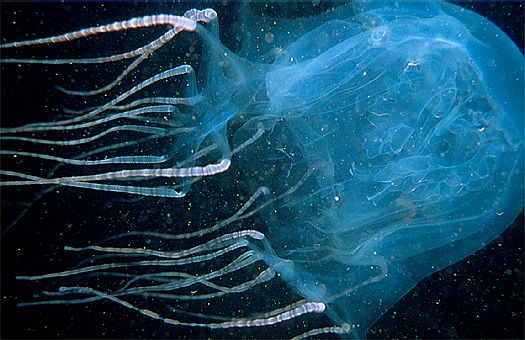
Box jellyfish species full#
In his report, Barnes even named his attacker 'Pseudo-Irukandji', because of its inability to inflict the full force of Irukandji syndrome. kingi specimen in his collection, and got off lightly. In the 1960s, Australian medical toxicologist, Jack H. kingi's danger to humans has been ambiguous, citing several attacks that have resulted in only minor symptoms. The species is distinguished from all others by having strange halo-like rings of tissue encircling its four tentacles. kingi tiny, it's also transparent, making it extremely difficult to spot in the water. kingi's bell grows to no more than 3 cm high. Like the bell-shaped body of C.barnesi, M. Some species of box jellyfish (cubozoans) can weigh up to 2 kg, but many are absolutely tiny. In 2007, Gershwin named this new species Malo kingi, after the scientist it felled. She compared cells from these nematocysts with those from several specimens of a new species she had found in 1999, and it was a perfect match. In her 2007 Zootaxa paper she concluded that these nematocysts were like none she'd ever seen before. No nematocysts were recovered from Jordan's body, which made it difficult to nail down a culprit, but it's widely assumed that he was stung by Carukia barnesi, a box jellyfish species from the Whitsundays area commonly known as the Irukandji jellyfish.Ī number of nematocysts were recovered from King's body and clothing, and were examined by Australian jellyfish expert and CSIRO researcher, Lisa-Anne Gershwin.
Box jellyfish species skin#
When a jellyfish's tentacle touches its victim, these little harpoon-shaped darts fire into the victim's skin to deliver venom into the bloodstream. He died in hospital with toxin-induced hypertension, which led to bleeding in multiple areas of the brain. It's possible that Jordon's death was brought on by the open heart surgery he had endured some months earlier, which could have made his symptoms much worse, but Robert King was in perfect health when he was stung. That year the world's first and only deaths from Irukandji syndrome would be recorded. But in 2002 between December and January alone, that number leapt to 80 victims at a single hospital in Cairns. During the holiday season of November to May in a regular year, an average of 30 people are hospitalised with Irukandji syndrome. In 2002 a record number of jellyfish appeared in the tropical waters of northern Australia, blown close to the coast and its tourist beaches by unusually strong and irregular winds. Around 30% of cases result in some form of heart failure, and one in five victims suffer life-threatening complications and end up on life support. A typical set of symptoms includes severe lower back pain, vomiting and muscle cramps, and if particularly serious, could result in toxic heart failure, fluid on the lungs or a brain haemorrhage. It takes 5-10 minutes after the sting for symptoms to set in, but when they do, they're excruciating. While rarely fatal, Irukandji syndrome sends most of its victims to hospital. Help I live here and my cat brings spiders into my house through the window.) (And now would be a good time to mention that there's a book by Sydney-based author, Wendy Lewis, that recounts King and Jordon's tragic encounters with these jellyfish called See Australia and Die. Many of them are found in Australian waters. Named after a local Indigenous Australian tribe near Cairns in Queensland, Irukandji syndrome is brought on by a sting from one of 10 species of venomous jellyfish found in tropical and temperate oceans around the world. The venom from the sting brought on Irukandji syndrome, and Jordon was its first documented fatality. Earlier that year, British tourist Richard Jordan had been stung by a jellyfish 700 km away on Hamilton Island. In 2002 King had travelled to Australia with his partner to spend some time snorkelling in Opal Reef, which is just off Port Douglas in Queensland. Thanks to its role in the death of Robert King, a Nestlé research scientist from Ohio, it has been nicknamed the Common Kingslayer. This tiny species of jellyfish is one of the most venomous creatures in the world.

"How's it feel, Kingslayer, to have all the gold in the world but it won't buy your sword hand back? "


 0 kommentar(er)
0 kommentar(er)
